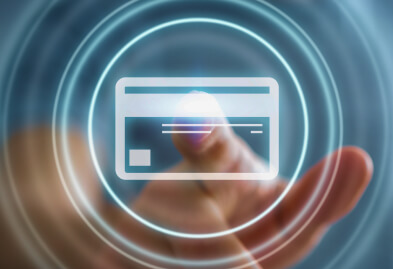
Avoid Portal Pitfalls: How to Choose Between Low-Code and Custom Builds
Understand the trade-offs of low-code / no-code in portal development. Get insights, best practices & get a low-code assessment from Veriday.
Customers are becoming more self-sufficient and empowered than ever with immediate access to information wherever they are. Organizations are struggling to meet the increasing demands of their customers. This is why strategic customer experience leaders are turning to self-service customer portals. These customer portals are not only able to fulfill the modern customer’s need for autonomy, but also decrease the amount of effort support teams are required to invest in each customer interaction.
However, many organizations may have a siloed technology stack that will prevent the implementation of integrated self-service strategies, leading to disjointed customer experiences.
Here are the essential elements needed for customer service leaders to get the most out of their self-service portal implementations.
The term “self-service” originated from a retail grocer in 1917 when Clarence Saunders filed a patent for his “self-serving store”. Instead of compiling a list of goods for a clerk to retrieve, customers would collect the items they wanted to buy themselves and present them to a cashier before leaving.
This concept has now evolved to describe digital experiences that empower users with the tools to find the information they need and have a better experience with the product or service, without the assistance of a service rep.
81% of customers across industries attempt to take care of matters themselves before reaching out to a live representative.
The first step to excellent digital customer experiences is self-service.

Business leaders need to be moving towards empowering customers to easily find the content and information themselves. This is not only how they prefer to interact with businesses, but also brings immediate benefits such as cost-savings and productivity gains by reducing the amount of calls into the customer support center.
Well-implemented digital self-service can provide long-term ROI such as:
Customers can easily find the answers they are looking for online, thus lowering the number of calls coming in
Having self-service establishes brand credibility and trust, so customers will view the portal as a useful tool and visit more frequently
Customers can quickly search for the information need, customer service reps can use their time to handle more complicated questions
Self-service enables more customers to be served in a shorter time span
Maintaining self-service channels is cheaper than managing live support channels
By providing self service, customers are able to select how they interact with organizations, thereby building an experience that they prefer
What does self-service in a customer portal actually look like? Here are some self-service functionalities to consider adding:

Knowledge bases that include a browseable and searchable database of topics, articles, tutorials, and other relevant information. It might also include an FAQ or Q&A section to further expedite a customer’s search for the content they need.

Forums that encourage knowledge exchange between customers and promote open discussions.

Account management without the help of a representative. Customers can easily edit and control their own accounts, which can include editing personal information, notification preferences, and closing accounts.

Digital assistants, such as chatbots, will also be critical in providing instant self-service to customers. Especially with the advancements in AI, these digital assistants will only become more effective.
Just because self-service will continue to be an important digital tactic for enterprises does not mean that it will be effective to use in every situation. Leaders must consider when it is appropriate to use customer self-service and when it is not.
Gartner recommends identifying and focusing on journeys that are of high value and high volume. Think about when:
• Customers could benefit from other customers’ expertise
• The same questions are being asked repeatedly
• Staff aren’t available to help
• The preferred learning style is “do it yourself”
In these cases, self-service should definitely be leveraged, both for the benefit of the customer and the organization’s customer support team.
On the reverse, here are scenarios when self-service would not be the best means of customer service:
• Highly complicated or unique questions and situations that require human expertise
• Customers that prefer to speak to representatives instead of searching for the answer online
Ultimately, consider how to best leverage self-service in order to scale support so that customer service representatives are using their time and skill more effectively to help customers where it really counts.
From over a decade of expertise in helping global leaders drive excellent self-service experiences for their customers, here are some general best practices our team recommends for a successful self-service portal:
Including self-service does not automatically increase the adoption of a customer portal. If customers are unaware of what self-service functionalities are available or how they will improve their experiences, then they will not find value in these features.
Ensure that customers are educated on the benefit of the self-service portal. Have a kickoff call, specialized training, documentation, and consistent communications to showcase the value of the tool being provided to them.
Self-service does not give businesses the license to simply ignore their customers until it’s time to cross-sell or upsell. Self-service is meant to elevate the existing customer service experience, not replace it. Enabling self-service is simply one more means of equipping your customers and customer service teams must still consider how they can enhance relationships with their customers.
Consumers are moving towards a fully connected world enabled by technology. They demand immediacy, connectivity, and simplicity in every interaction on their buying journey. Companies that are able to provide relevant and agile customer experiences will be the ones that differentiate themselves from their competitors. Deliver the experiences your customers want with an engaging self-service portal.
Self-service will require alignment between IT and Business units. Are IT teams hesitant to switch from live channels to customer self-service? Download this guide to help gain buy-in from IT to craft an effective self-service strategy.

 5 Fundamentals for Digital Transformation in Manufacturing
5 Fundamentals for Digital Transformation in Manufacturing